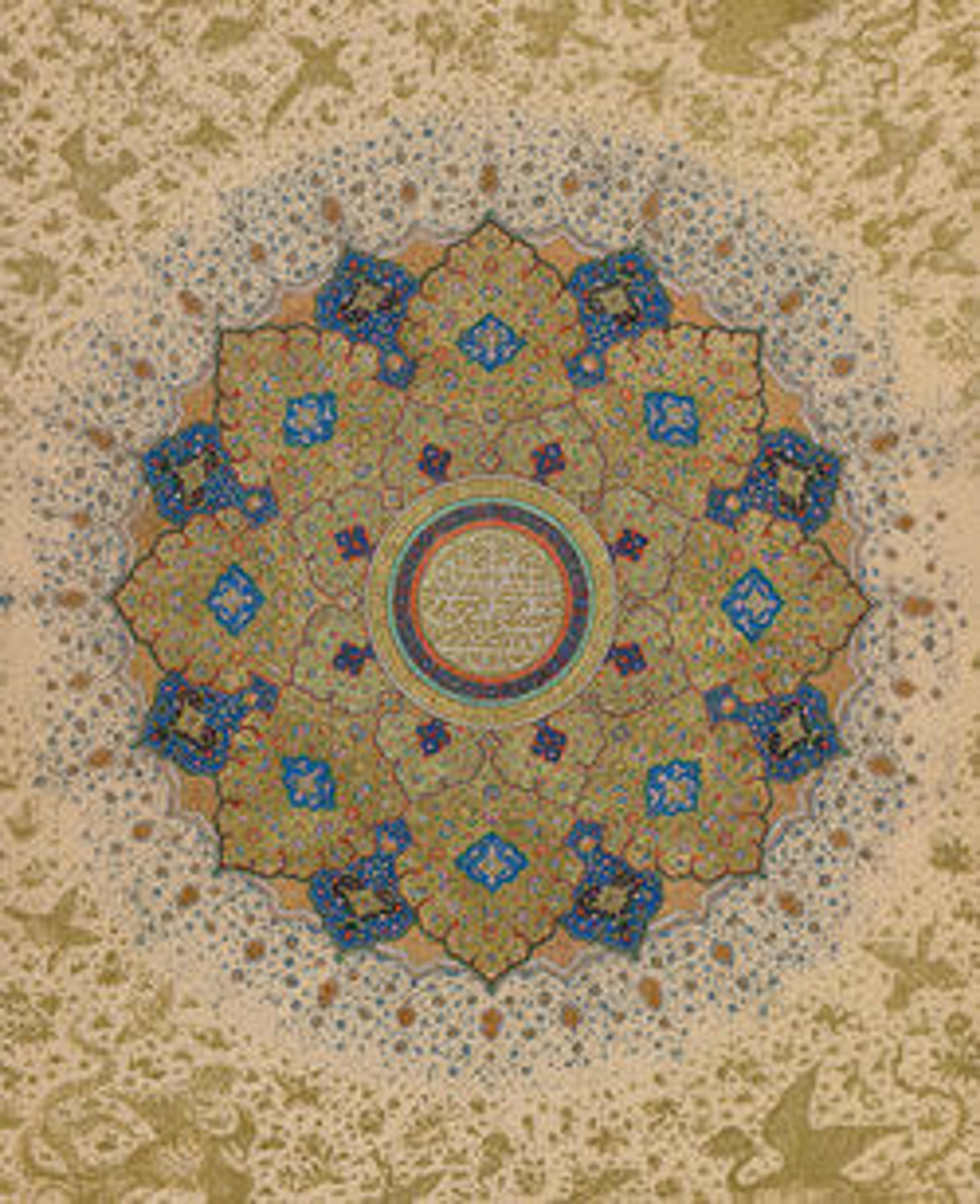Velvet Panel with Rows of Flowers
Textiles depicting formally arranged, naturalistic flowers on a neutral background were produced in great numbers during the reign of the emperor Shah Jahan (r. 1628–58). This distinctly Mughal decorative style developed from the influence of European herbal illustrations on traditional Indian depictions of nature. Despite their connection to medical illustrations, these roses and lilies, while naturalistic, have been altered for aesthetic reasons and are not botanically correct.
Artwork Details
- Title: Velvet Panel with Rows of Flowers
- Date: mid-17th century
- Geography: Attributed to India
- Medium: Silk, cut and voided velvet, with continuous floats of flat metal wrapped thread
- Dimensions: Textile: H. 65 7/8 in. (167.4 cm) )
W. 29 15/16 in. (76 cm)
Mount: H. 72 1/2 in. (184.2 cm)
W. 34 3/4 in. (88.3 cm)
D. 1 3/4 in. (4.4 cm) - Classification: Textiles-Woven
- Credit Line: The Alice and Nasli Heeramaneck Collection, Gift of Alice Heeramaneck, 1991
- Object Number: 1991.347.2
- Curatorial Department: Islamic Art
More Artwork
Research Resources
The Met provides unparalleled resources for research and welcomes an international community of students and scholars. The Met's Open Access API is where creators and researchers can connect to the The Met collection. Open Access data and public domain images are available for unrestricted commercial and noncommercial use without permission or fee.
To request images under copyright and other restrictions, please use this Image Request form.
Feedback
We continue to research and examine historical and cultural context for objects in The Met collection. If you have comments or questions about this object record, please contact us using the form below. The Museum looks forward to receiving your comments.
